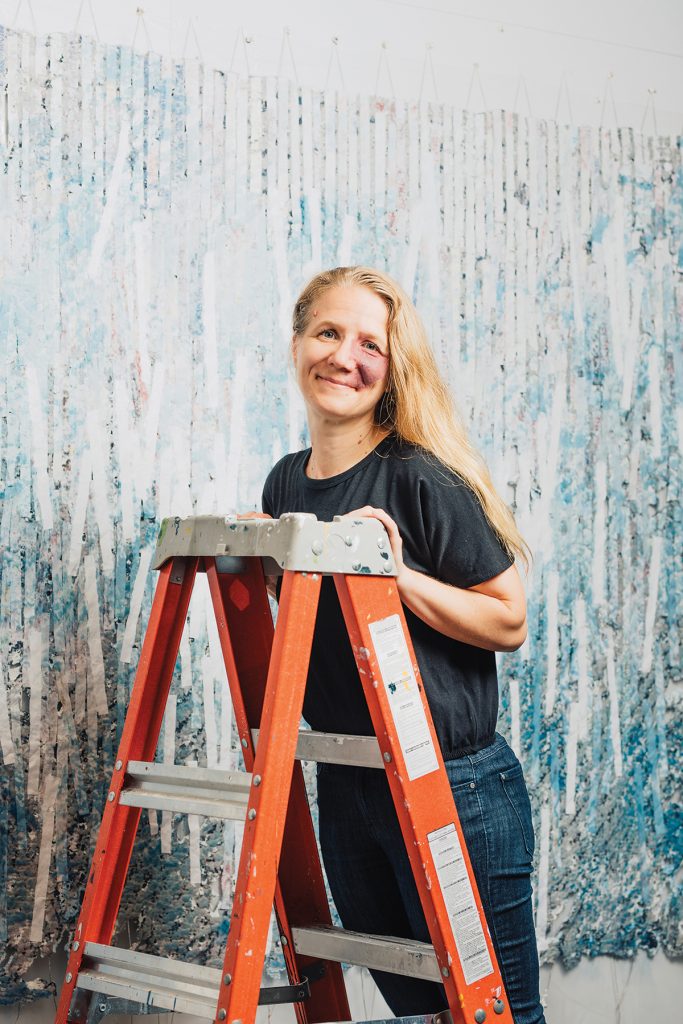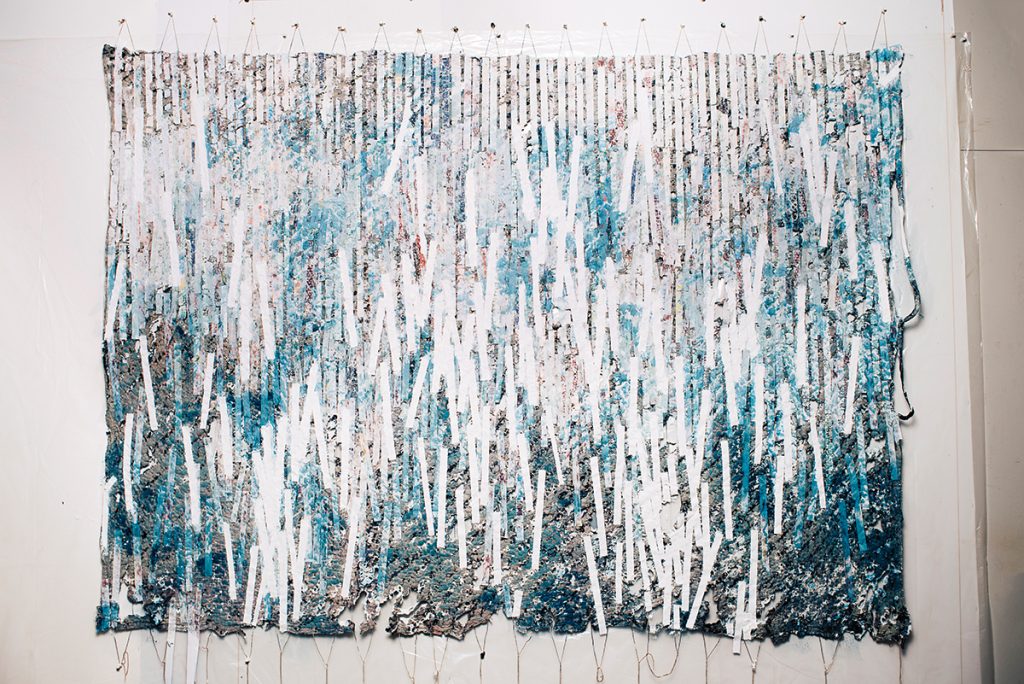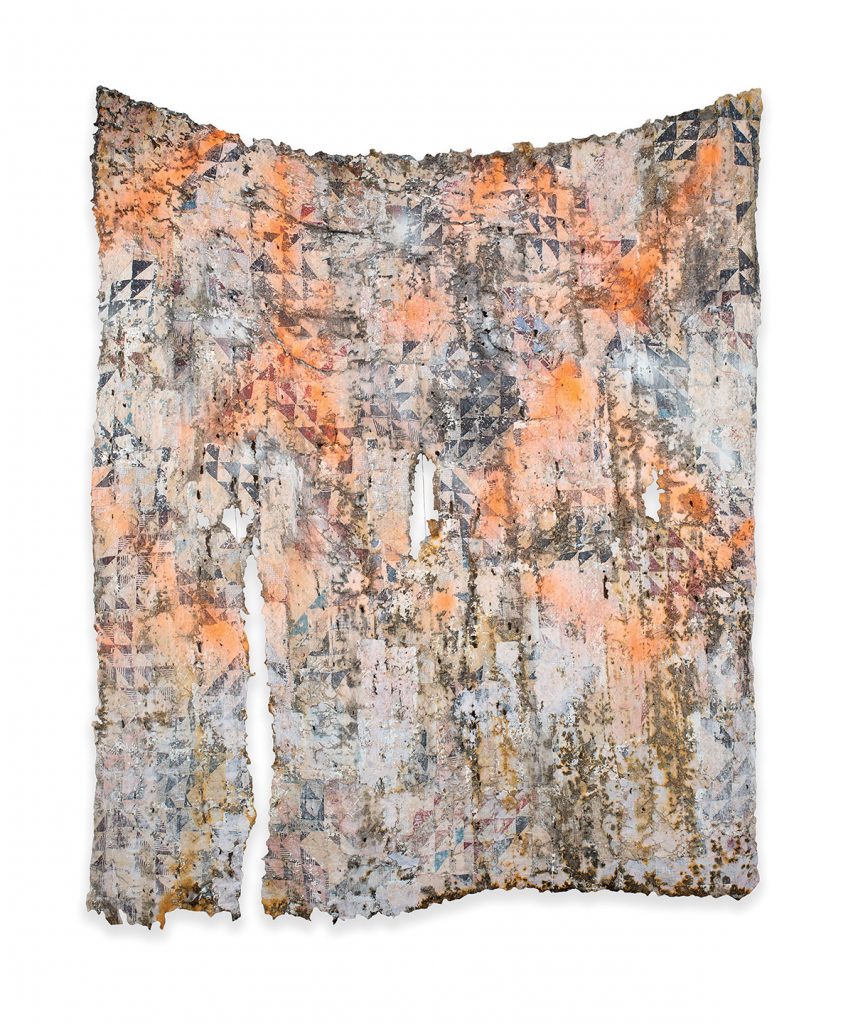
Portrait by Clark Hodgin
If there’s a provable craft gene, Rachel Meginnes may one day weave the evidence. Her paternal grandmother hooked primitive-style rugs; her maternal grandfather was a woodworker. Her mother restores antique hooked rugs, and her father repairs antique clocks.
Even Meginnes’ public high school, in rural Vermont, encouraged the kind of immersion that makes a career artisan. In order to graduate, she relates, every senior had to find a mentor in the local community with whom to study a chosen subject — a 30-hour project. “I decided I wanted to learn how to weave,” she says.

And Meginnes remains drawn to processes that demand perseverance — “repetitive, mindless tasks that allow my brain to wander and imagine … [and] to dig deep and find connection, hands-on, with my materials — and therefore my work.” She created functional textiles during her time at Earlham College, and later, at the University of Washington, she earned an MFA in fibers. Since then, her work has been exhibited locally — at Blue Spiral 1, Penland, and the Tracey Morgan Gallery — and across the country. It appears in private collections near (Samsel Architects in Asheville) and far (in Jordan, as part of the U.S. State Department’s Art in Embassies Collection).

Textiles, she says, “have a way of evoking emotion in us, since we surround ourselves in them every day and have ever since we were born.” Her current series are rugged, but not in an everyday-wear kind of way. Instead, her mature work heads toward the avant-garde: Meginnes has created her own method of deconstruction.
Her technique results in new pieces that carry with them bits and pieces of their past. It’s an idea that traces back to something she made in grad school. That project, she recalls, correlated the loss of life with the loss of threads: “I removed threads from a cloth in a manner that recorded the fatality statistics coming out of the Iraq War at the time.”

Later, she began deconstructing quilts with the objective of restating them through alteration. “When I started taking apart my first quilt, I discovered an entire old quilt inside it. These old textiles let me see inside the brains and lives of these older quilters.”
The work is meticulous. First, the top and back layers are removed by carefully cutting every stitch made by the original quilter. Then she pulls out the insides, usually sheets of cotton batting.

The painting stage is layered, too. Rather than applying it directly to the cloth, Meginnes transfers it first onto paper — a degree of remove.
“Each piece is a continual response to what I find, which can be a little maddening. I am constantly reforming my vision.”
The first quilt she used was a gift. Since then, she’s sourced them from acquaintances, antique stores, and on eBay. “I look for quilts that have served a lot of time. I love the ones with holes and stains.
“I consider it an act of reclamation … I’m fascinated by discovering what something has the ability to become.
Rachel Meginnes, Bakersville. Her studio is open by appointment (rachelmeginnes@gmail.com, 206-658-5115, rachelmeginnes.com). Meginnes’ work is represented by Tracey Morgan Gallery in Asheville (188 Coxe Ave., traceymorgangallery.com). Her pieces will be on display as part of Appalachia Now! An Interdisciplinary Survey of Contemporary Art in Southern Appalachia, the inaugural exhibit of the newly renovated Asheville Art Museum, which opens Thursday, Nov. 14. See ashevilleart.org for details.